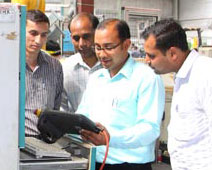Safety shoes are made usually from an upper, a midsole, an outsole and a footbed. In some of the shoes, there’s a puncture resistant plate. These components are known for having a resistance to an electronic discharge. In some sectors/industries, there is a need for having the lowest possible resistance to electrostatic discharges.
ESD Safety Shoes
One of the main purposes of ESD Safety Footwear is that it represents the point of connection between the body and the floor. These shoes protect electrical equipment by sending (conducting) electrical charges to the ground, preventing a static shock, charge or spark. You should note that ESD shoes are extremely safe while eliminating the risk of electric shock from electrical equipment or live parts as well as that posed by sparks igniting flammable substances or vapors.
Labelling ESD Safety Footwear
While meeting the requirements of the product protection standard, shoes are labelled from the CE marking. In lieu of this, safety footwear has additional yellow ESD symbol which meets the terms and standard features. The shoes that don’t have any special ESD symbol, they are labelled as S1 (antistatic).
Why ESD Shoes Are Required and When Is It Necessary?
ESD safety footwear is the perfect work boots that are available in various forms in the market. Benefits and performance vary, with buyers selecting footwear based on their needs and priorities. Some of the advantages of ESD safety shoes are as follows:
- Easiest type of footwear to use
- Compliance is easy to monitor.
- Full, continuous contact with the ESD floor
- Superior static protection
- More reliable and durable
Entitled to work on a safe working environment, every employee should wear the proper attire - high visibility clothing, hard hats and safety footwear. Not only designed to protect the feet against all types of injuries, these types of boots also safeguard the workers feet from punctures in a risk induced environment for e.g. construction sites, engineering firms, steel factories, etc.








